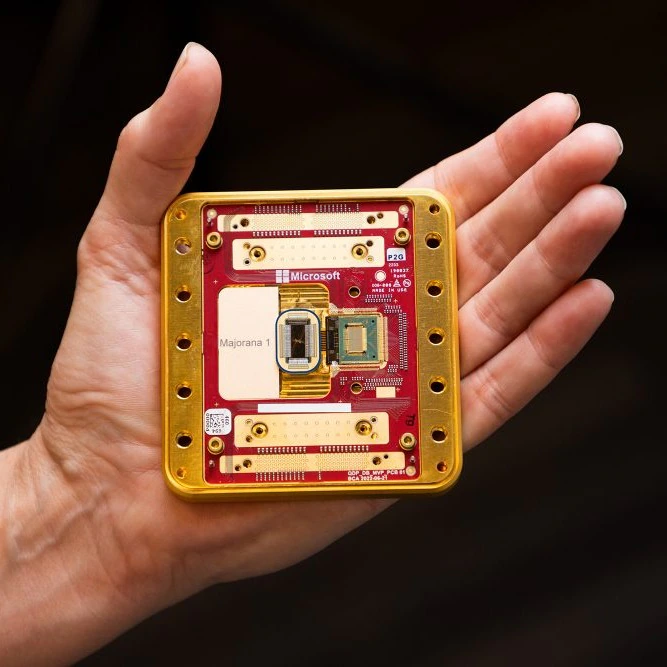Microsoft Unveils Magma – The AI Model That Can See, Read, and Take Action in the Real World
Introduction
Microsoft has once again pushed the boundaries of artificial intelligence with the launch of its revolutionary AI model, Magma. This breakthrough technology is designed to simulate human-like perception, enabling it to see, read, and take decisive action in the real world. As technology becomes an integral part of everyday life, Magma is set to transform various sectors, including education, security, banking, and more.
Advanced Visual and Reading Capabilities
Magma’s state-of-the-art algorithms allow the AI to process visual data with unprecedented accuracy. Equipped with high-definition sensors and robust image recognition software, the model can interpret complex images, read text from various sources, and even analyze real-time data. This functionality not only augments traditional computing capabilities but also opens new avenues for automation in fields such as surveillance and document verification.
Real-World Application and Innovation
The potential applications of Magma are vast. In law enforcement, for instance, the AI can assist police officers by analyzing live video feeds to detect anomalies or potential security threats. Similarly, in the banking sector, Magma could be used to automate the verification process of important documents, thereby reducing human error and expediting customer service. Furthermore, the integration of such technology in defence and civil services promises to enhance operational efficiency and decision-making processes.
Future Prospects and Ethical Considerations
As with any groundbreaking technology, the introduction of Magma raises important ethical and privacy issues. Microsoft emphasizes its commitment to transparency and the implementation of strict guidelines to ensure that Magma’s capabilities are used responsibly. The company is working closely with regulatory bodies and industry experts to address any potential misuse and to set a benchmark for future AI developments.
Conclusion
Microsoft’s unveiling of Magma marks a significant milestone in AI evolution. Its ability to seamlessly merge visual recognition with actionable insights is expected to not only revolutionize existing processes but also inspire innovative solutions across multiple sectors.

Why This News is Important
Impact on Technology and Society
Microsoft’s introduction of Magma represents a quantum leap in artificial intelligence. With the capacity to see, read, and act, this AI model bridges the gap between digital data processing and real-world application. Such advancements are crucial for students and professionals preparing for government exams, as they highlight the rapid evolution of technology and its implications in governance, public administration, and national security.
Enhancing Efficiency in Public Sectors
For sectors like law enforcement, banking, and civil services, the integration of advanced AI models such as Magma can lead to significant improvements in efficiency and accuracy. These technologies promise to reduce human error, streamline processes, and offer innovative solutions to long-standing challenges in these fields. Understanding such technological innovations is essential for aspirants, as they form a key part of modern governance and policy formulation.
Preparing for Future Trends
As AI continues to reshape industries, staying informed about breakthroughs like Magma helps students grasp emerging trends and prepare for future challenges in their respective careers. This news underscores the importance of adaptability and continuous learning in a rapidly evolving technological landscape.
Historical Context
Evolution of AI in the Real World
The journey of artificial intelligence has been marked by significant milestones over the past decades. From the early days of rule-based systems to the modern era of machine learning and deep neural networks, AI has evolved to perform complex tasks that were once thought to be uniquely human. Recent advancements have focused on integrating sensory perception with decision-making capabilities. Magma is a culmination of these technological strides, reflecting years of research and development not only by Microsoft but by the global tech community. Its launch signifies a new chapter in AI, where machines can interact with the environment in ways that mimic human cognition and perception.
5 Key Takeaways from This News
| Serial Number | Key Takeaway |
|---|---|
| 1 | Microsoft has launched Magma, an AI model with the ability to see, read, and act. |
| 2 | Magma’s advanced capabilities include high-definition visual recognition and text processing. |
| 3 | The technology has potential applications in law enforcement, banking, defence, and civil services. |
| 4 | Microsoft is committed to ethical practices and regulatory compliance in deploying Magma. |
| 5 | This launch marks a significant step forward in the integration of AI in real-world applications. |
Important FAQs for Students from this News
Q1: What is Magma?
A1: Magma is Microsoft’s latest AI model capable of visual recognition, text reading, and taking action based on real-time data.
Q2: How does Magma work?
A2: Magma uses advanced algorithms and high-definition sensors to process and interpret images and text, enabling real-world applications.
Q3: In which sectors can Magma be applied?
A3: Magma can be applied in various sectors such as law enforcement, banking, defence, and civil services.
Q4: What ethical measures has Microsoft taken with Magma?
A4: Microsoft has committed to strict guidelines and regulatory compliance to ensure the ethical use of Magma’s capabilities.
Q5: Why is this news important for government exam aspirants?
A5: This news is significant because it highlights technological advancements and their impact on sectors relevant to government jobs, enhancing overall exam preparedness.
Some Important Current Affairs Links


















 Exciting News!
Exciting News!  Join Our Telegram Channel Now!
Join Our Telegram Channel Now!
 Join our Telegram channel for a thrilling adventure into the world of daily current affairs.
Join our Telegram channel for a thrilling adventure into the world of daily current affairs. 
 Don’t miss out on the latest updates and insights! Click to join now and be part of the knowledge revolution!
Don’t miss out on the latest updates and insights! Click to join now and be part of the knowledge revolution! 
